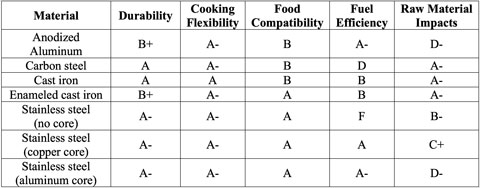What are Non-Stick Cooking Pans
For many, non-stick cookware is a kitchen staple. The properties of the chemical coating on the pan’s surface make cooking and cleaning even stubborn, sticky foods an easy process. But what is it?
Polytetrafluoroethylene, or PTFE, is a chemical coating used on the surface of non-stick cookware, which is then subjected to high heat for finishing.
Dangers of Non-Stick
PTFE is considered non-toxic and safe in a normal state. However, at temperatures above 500 degrees Fahrenheit, it will start to release fumes. At around 660 degrees, individuals can develop ‘polymer fume fever’. After about 750 degrees, the coating starts to break down into the slightly toxic tetrafluoroethylene (TFE) and other compounds that range in toxicity.
The synthesis or creation of non-stick material involves the use of PFOA. This pollutant is known for its long-term accumulation in our environment (“forever chemicals”) and has been linked to several hazardous impacts with high levels of exposure. Facilities that use and create PFOA release it into their wastewater which has been linked to our drinking water.
Non-stick Pans and the Environment
PFOAs characteristically long degradation time means that they are difficult to get rid of. They have been identified to accumulate in both animals and the environment globally. We are producing more of this chemical than it can degrade and is highly understudied. Current research has found these chemicals to increase rates of cancer in animals exposed to it. Since most research is done to observe human effects, there is a lack of focus on the impact on the environment and wildlife. PFOAs are now defined as environmental pollutants, actively harming the ecosystems they contaminate.
Additionally, non-stick pans are unsustainable. Even with proper care and maintenance of your pan, it still needs to be replaced around every three to seven years depending on the quality. Compared to other options, this level of replacement has significant environmental impacts. Every time you replace your cookware, your carbon footprint increases. You can determine if your pan needs replacing if you see the coating flaking off, the surface looks scratched and dry, and if there is a noticeable amount of food sticking to the pan while cooking.
Make the Switch!
- Stainless Steel Pan
Stainless steel pans are durable and safe to use. They are a versatile cooking tool that can be cleaned similarly to non-stick pans.
- Cast-Iron Pan
If taken care of properly, these pans can last a lifetime. Cast-Iron pans have pores that are naturally non-stick without releasing hazardous fumes. They can be used in the stove, on a grill, or on the burner, making them a useful cooking must-have.
- Ceramic
Ceramic cookware has a non-toxic non-stick surface, making it the perfect replacement for non-stick pans. They are easy to clean and cook with, without using PFOAs or PTFE. However, the non-stick coating on ceramic cookware is more fragile and susceptible to damage through use. Like non-stick pans, they need to be replaced around every 5 years.
- Other Options

(Stanford Mag.)
Information from NIH, EPA,San Francisco Environmental Department, Federal Register, America Tastes Kitchen, Sustained Kitchen, and Stanford Magazine. Image from Stanford Magazine.